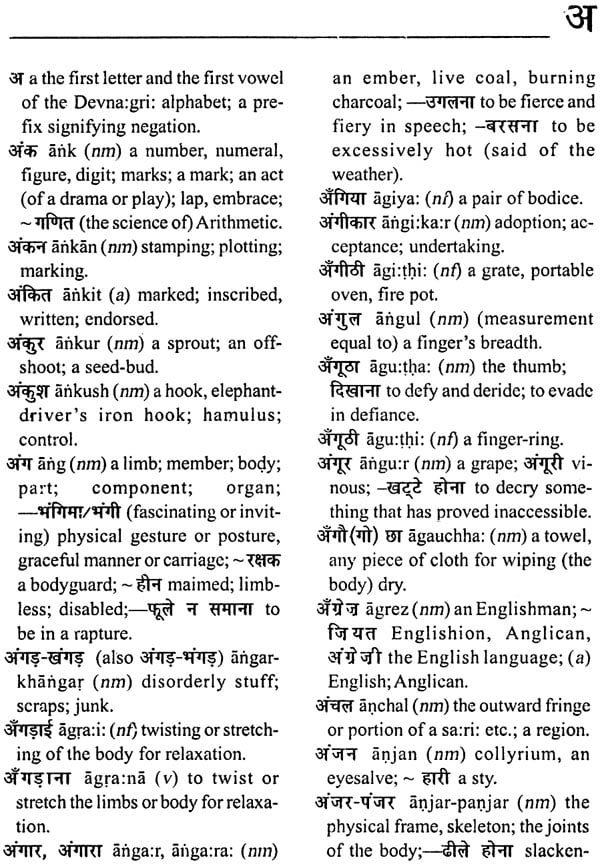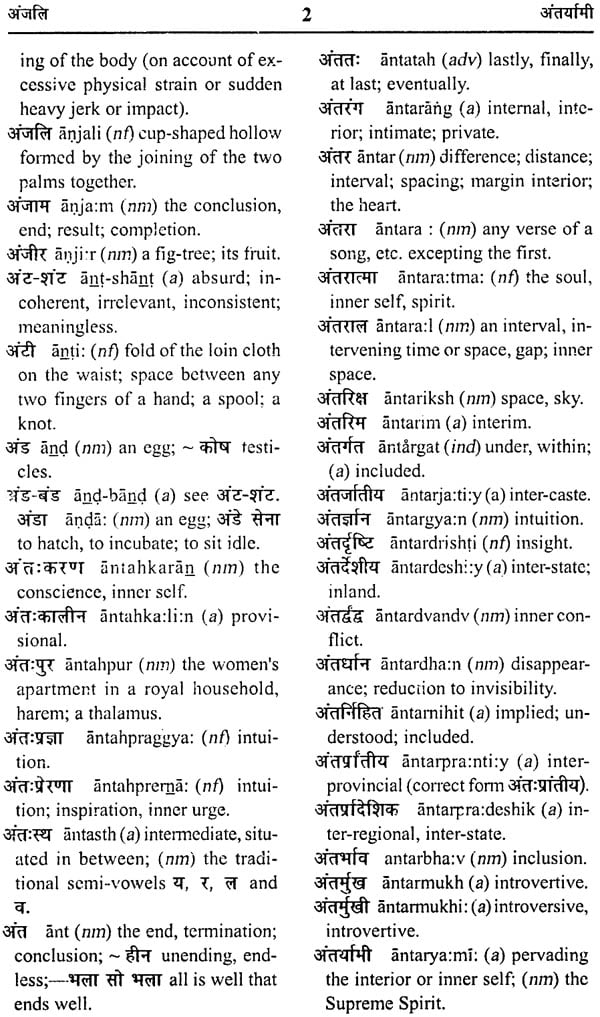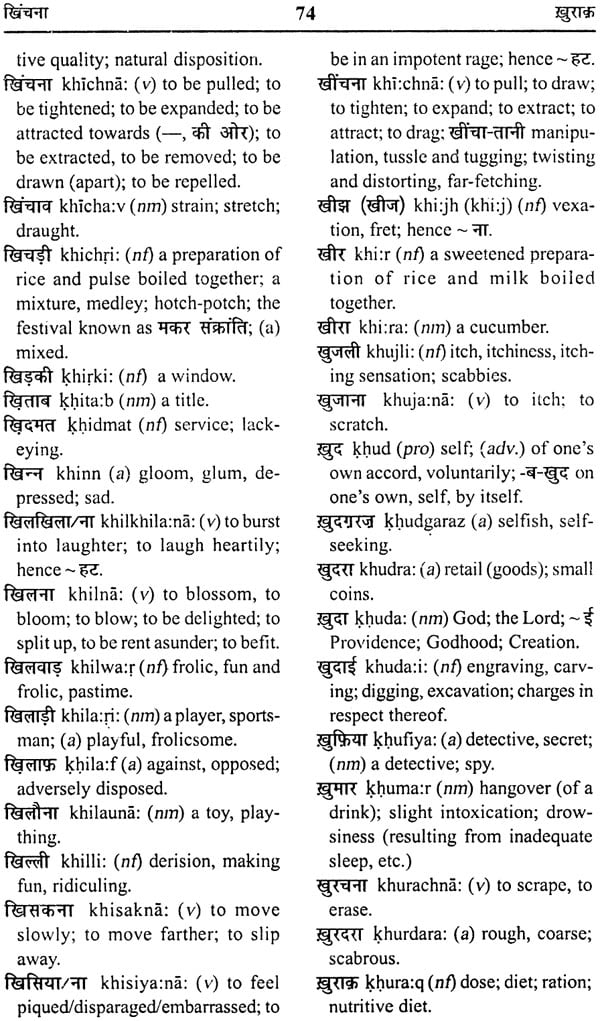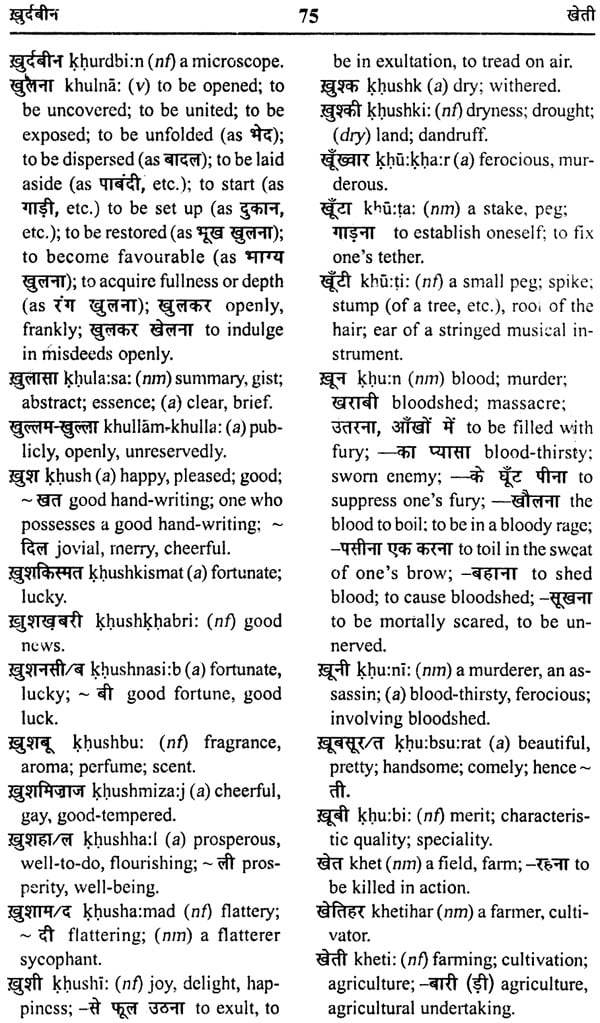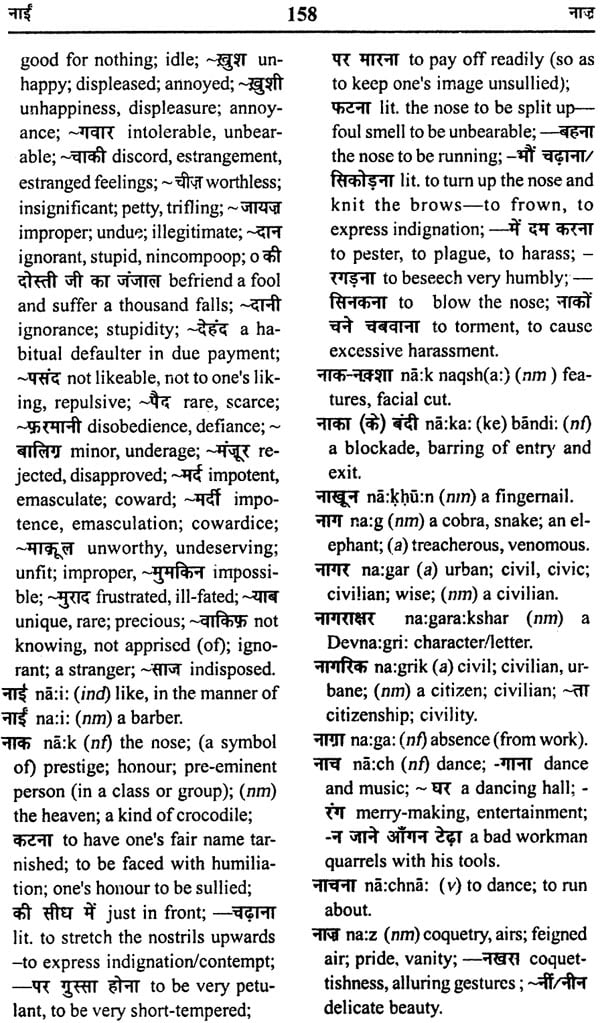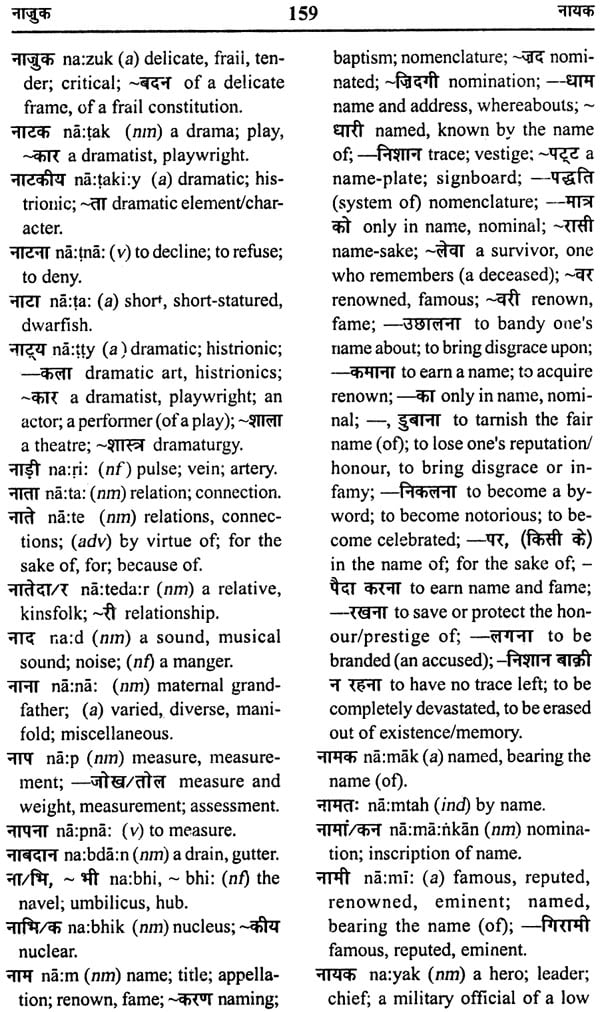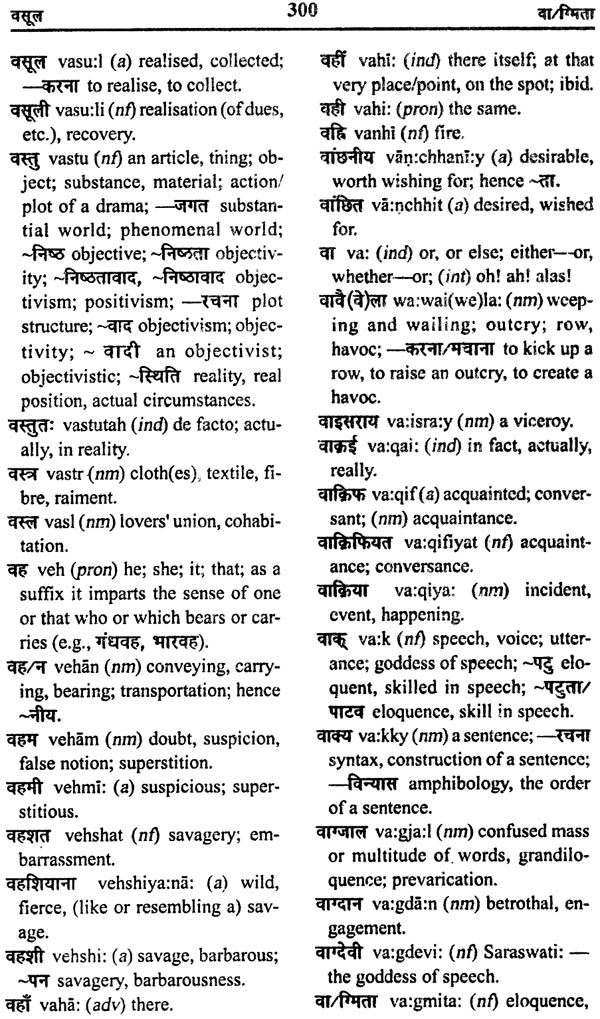
A Shorter Hindi-English Dictionary
Book Specification
| Item Code: | NAT103 |
| Author: | Mahendra Chaturvedi and Bhola Nath Tiwari |
| Publisher: | National Publishing House |
| Language: | ENGLISH AND HINDI |
| Edition: | 2012 |
| ISBN: | 8121400481 |
| Pages: | 394 |
| Cover: | HARDCOVER |
| Other Details | 9.00 X 6.00 inch |
| Weight | 570 gm |
Book Description
A Shorter Hindi-English Dictionary
Salient Features
- It comprises almost the whole active vocabulary of modern Hindi.
- It covers words of both literary, technical and as well as common usages of contemporary Hindi vocabulary.
- It incorporates current idioms, proverbs and peculiar usages of Hindi with precise, parallels.
- It gives actual phonetic pronunciation of each main entry to facilitate the learning process by all non-Hindi and Hindi speakers alike.
- It covers all prevalent nuances of current Hindi words with semantic precision.
- It lists approximately 20,000 words in main and sub-entries and adopts adequate emphasis on practical aspect of linguistic usages as the keystone of its edifice.
- It enjoys unique and unchallenged supremacy in the field of bilingual lexicography in Hindi.
Dictionaries form a wide and varied genre of the literature of knowledge—one of the main categories being comprised of bilingual dictionaries. Bilingual dictionaries represent an effort to convey the meanings and significance of words, typical usages, idioms and proverbs of one language through the medium of another— which may or may not be blessed with matching verve and richness. The tradition of bilingual dictionaries can be traced back to fairly ancient times in world literature. India, too, is not without its own tradition of bilingual dictionaries although Indian languages, today, cannot claim to be as advanced or rich as some other languages of the world, such as Russian, English, German, French etc. And what is true of Indian languages in general is also true of Hindi in this respect.
The first bilingual dictionary in Hindi is the Kha-lig Ba-ri: which lists Persian (and sometimes Arabic and Turkish) equivalents of Hindi words (and phrases). We can enumerate about half-a-dozen more, such as ‘Lugatae Hindi’ ‘Gara:ybul luga:t', ‘Alla:khuda:i: in this tradition. Obviously, they reflect genuine efforts on the part of triumphant Muslims to acquire fluency in the Hindi language and to be able to understand it better. The same phenomenon was repcated, mutatis mutandis, when the Europeans achieved sway over the northern parts of the country and felt the imperative need to have workable knowledge of Hindi. Hindi-English Dictionaries, numbering a score and a half, were compiled to fulfil this need of the times. The earliest in the series was John Fergusan’s °A dictionary of Hindustani language’ which was published in London in 1773 A.D. Among others ‘A Dictionary : Hindustanee and English’ Calcutta, 1808 (Taylor) ‘A Dictionary : Hindustani and English’, London 1817 (Shakespeare), "A Dictionary: Hindustani and English’, London 1848 (Duncan Forbes)’ and ‘A Dictionary of Urdu, Classical Hindi and English’ London, | 884 (Platts) deserve special mention. The last mentioned work is, undoubtedly, the best of the whole lot.
The second quarter of the present century saw another dictionary compiled by Shri R. C. Pathak (Bhargava’s Standard Illustrated Dictionary of the Hindi language, Benares, 1946) which, although based essentially on Platts, represents a linguistic anachronism and betrays complete ignorance of the art of lexicography. It abounds, on the one hand, in words and meanings which never formed an essential part of standard Hindi vocabulary and ignores, on the other, numerous words and meanings that have very much been an asset to and form an integral part of the language. The very fact that this dictionary has gone into several editions reflects the poor state of our lexicographical equipment in the field.
In 1966, the Central Hindi Directorate of the Govt. of India, Ministry of Education, brought out a small-sized ‘Hindi-English Dictionary of Common Words’ comprising about five thousand entries, at the instance of the then Prime Minister, Pandit Jawaharlal Nehru. This was rather a meagre tribute to the wishes of a great and mighty man who always believed in doing things ‘in a big way’ It, however, reflected an approach that was much more scientific and precision- based. With all its limitations in terms of size and selection of entries, it was a worth-while contribution to this rather unproductive field.
In fact, none of the dictionaries mentioned above incorporates all, or nearly all, the active vocabulary of modern Hindi and adopts comparatively newer lexicographical techniques. The present work is an humble effort to fulfil the twin objectives.
The main characteristics of the dictionary may be summed up as follows:
(i) It comprises of almost the whole active vocabulary of modem Hindi including words of common or literary usages as also. commonly prevalent technical and semi-technical terms.
(ii) An effort has been made herein to incorporate all current idioms, proverbs and peculiar usages of Hindi.
(iii) Each main entry is followed by its actual pronunciation.
(iv) While fixing the English equivalents for Hindi words, emphasis has not been laid on conglomerating all, even remotely possible, words having far-fetched affinity of meaning, but on the selection of semantically precise and exact equivalents as far as possible. It is the semantic proximity, in other words, that has mattered in the selection of words and not the numerical strength of the equivalents. In fact, we have tried to restrict the number of equivalents as far as possible.
It may, in short, be stated that an over-riding emphasis on practical aspect of linguistic usages forms the keystone of its edifice. It is this factor that is sought to be reflected in the title of the dictionary viz. ‘A Practical Hindi-English dictionary’ We seek here to discuss, in brief, the main problems of compilation in respect of this dictionary.
**Contents and Sample Pages**
